What is the fastest fish to grow?
Which fish will give you the quickest results in your aquarium or fish farm? This is a common question for enthusiasts and professionals alike.
The fastest-growing fish often include certain tilapia species and some ornamental fish like guppies, which can reach maturity in a few months under optimal conditions.
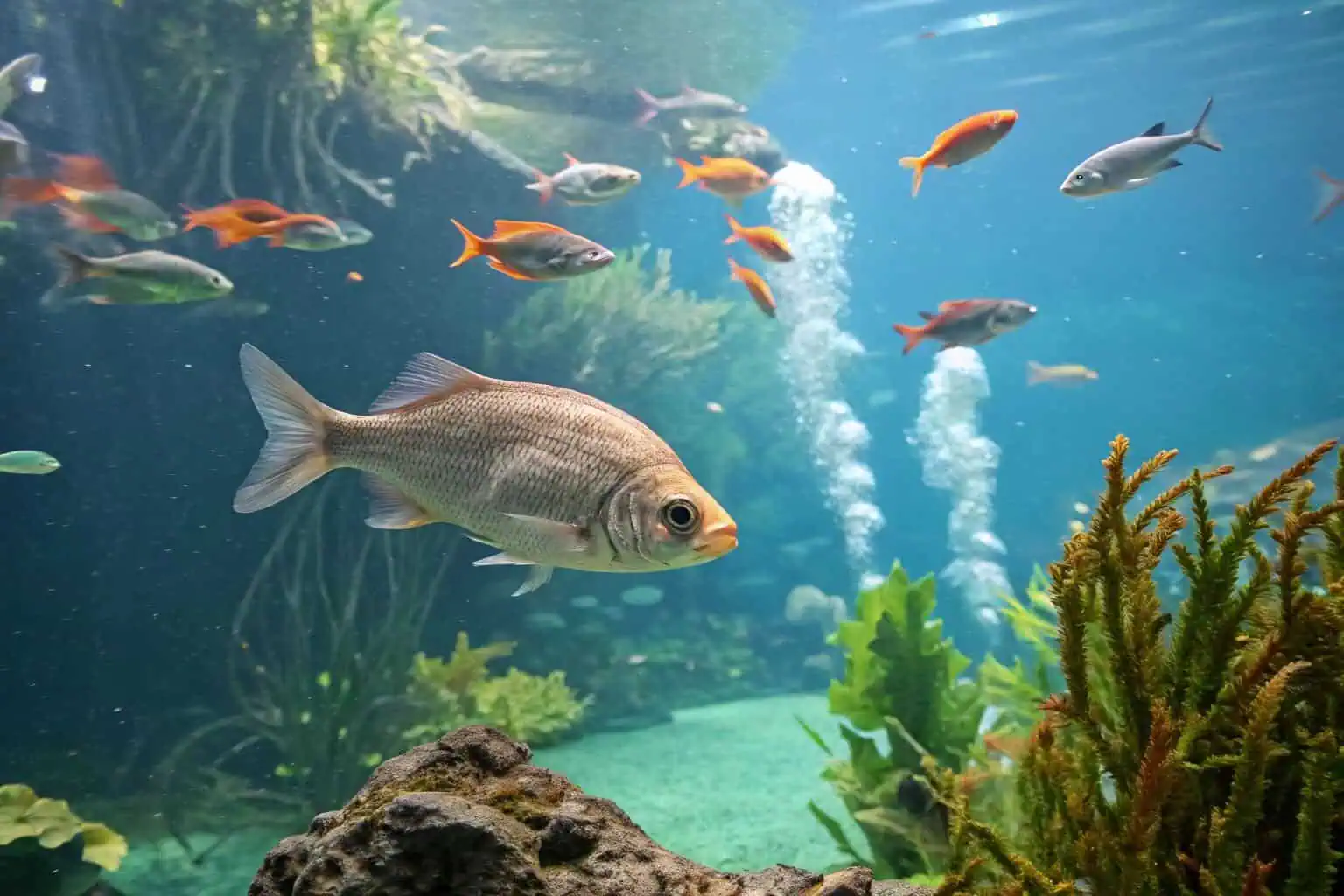
Choosing the right fish can make a big difference in your experience. Whether you're a hobbyist looking for a lively tank or a small-scale farmer aiming for a quick turnover, understanding growth rates is key. Let's explore some of the top contenders and what makes them grow so fast.
What is the fastest fish for its size?
When we talk about speed, are we considering overall growth or how quickly a fish grows relative to its potential adult size? It's an interesting distinction.
Relative to their size, smaller fish like guppies or mollies often appear to grow fastest, reaching their adult size in a very short period compared to larger species.
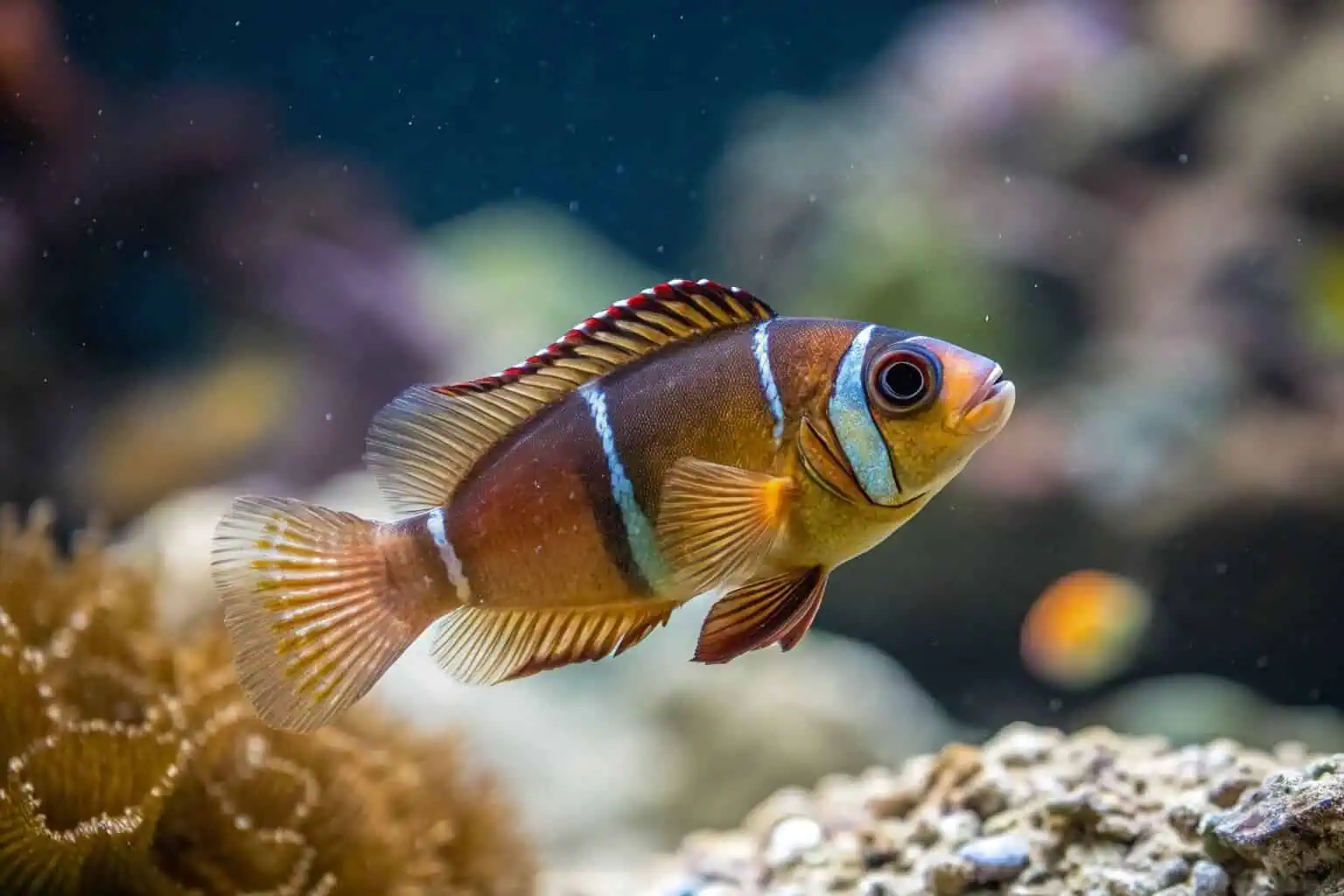
I've always been fascinated by how different species develop. Some fish seem to shoot up in size almost overnight, especially when they are young. This rapid development in smaller species is quite remarkable. It's not just about getting big; it's about reaching maturity and full size efficiently. For aquarium hobbyists1, this means you can see your fish reach their full potential quickly, which is very rewarding. For small-scale breeders2, this rapid growth cycle can mean quicker generations and the ability to adapt breeding programs faster. It's a testament to nature's efficiency, packing so much development into such a short timeframe. This characteristic makes them particularly appealing for those who want to see tangible progress in their aquatic setups without a long wait.
Factors Influencing Relative Growth Speed
Several factors contribute to how fast a fish grows relative to its adult size. Genetics play a huge role, as some species are simply programmed for rapid development. Diet is another critical component; a high-quality, protein-rich diet3 can significantly accelerate growth, especially in the early stages. Water quality and temperature are also key. Stable, clean water with the optimal temperature for the species allows the fish to thrive and dedicate energy to growth rather than stress recovery. For example, many tropical fish will grow faster in slightly warmer, well-maintained water. Tank size can also be a factor; while overcrowding stunts growth, an appropriately sized environment allows fish to grow comfortably.
Examples of Fish with Fast Relative Growth
| Fish Species | Typical Adult Size | Time to Adult Size | Key Growth Factors |
|---|---|---|---|
| Guppy (Poecilia reticulata)4 | 1.5-2.5 inches | 3-4 months | Warm water, good diet, frequent small feedings |
| Molly (Poecilia sphenops)5 | 3-5 inches | 4-6 months | Slightly brackish water (for some varieties), vegetable matter in diet |
| Zebra Danio (Danio rerio)6 | 2 inches | 3-4 months | Active swimmers, need space, good diet |
| Platy (Xiphophorus maculatus) | 2-3 inches | 4-5 months | Hardy, adaptable, varied diet |
These fish are popular not just for their vibrant colors and active nature, but also because you can witness their entire lifecycle in a relatively short span. This makes them excellent choices for educational purposes or for hobbyists who enjoy observing rapid development.
What is the easiest fish to grow?
Are you new to fishkeeping or just looking for low-maintenance options? Finding fish that are easy to care for can make the hobby much more enjoyable.
Guppies, platies, and betta fish are often considered some of the easiest fish to grow due to their hardiness and adaptability to various water conditions.
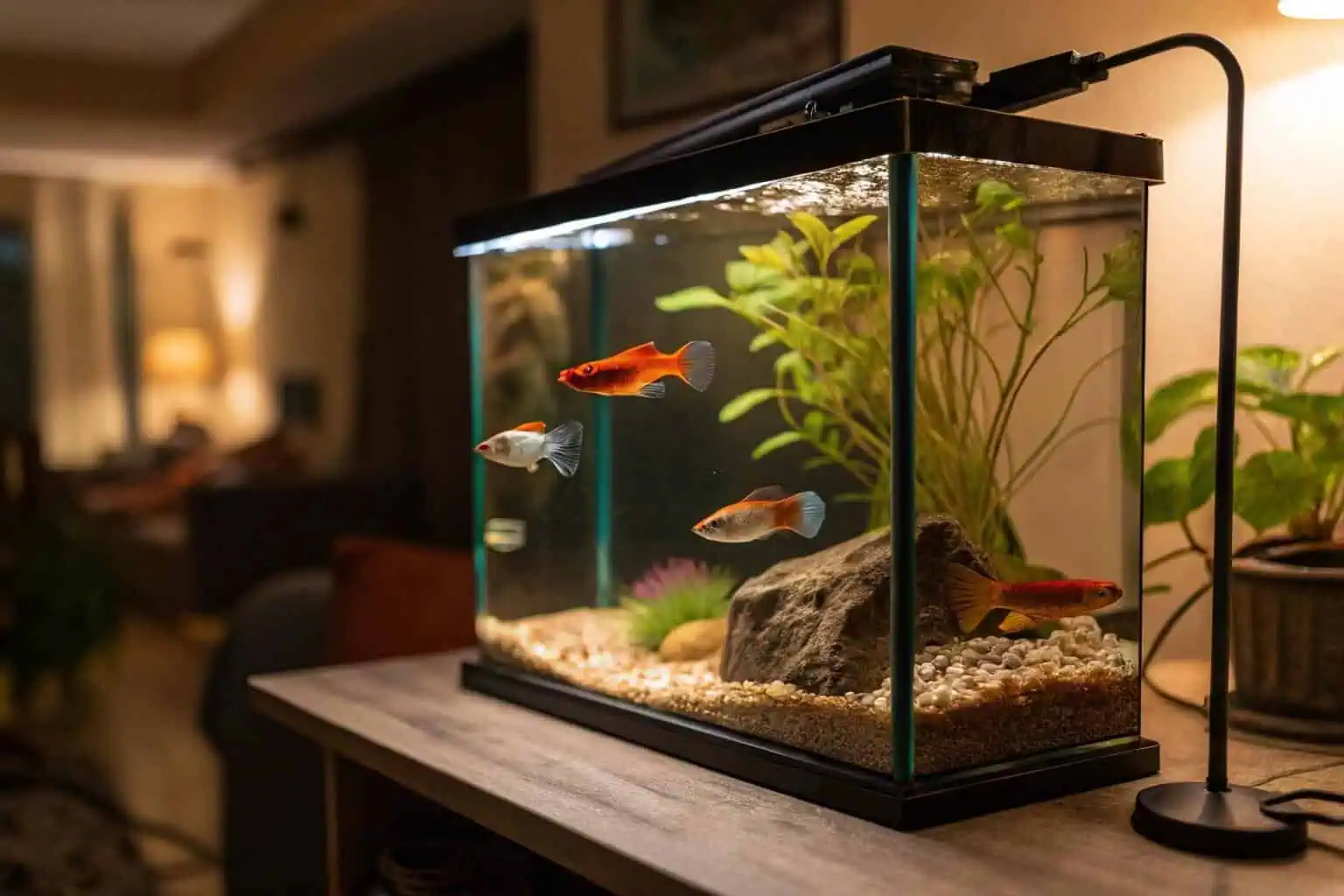
From my experience, starting with easy-to-care-for fish7 is the best way to get into the hobby. I remember when I first set up a tank; I chose guppies, and it was a fantastic decision. They were forgiving of my beginner mistakes and thrived with basic care. This initial success really boosted my confidence and passion for fishkeeping. The key with these fish is their resilience. They can tolerate a wider range of water parameters than more sensitive species, which means less stress for both the fish and the keeper. They also tend to have robust appetites and aren't usually picky eaters. This makes feeding straightforward. For anyone looking to add some aquatic life to their home without a steep learning curve, these species are a great starting point. They bring so much life and color with relatively little fuss.
Characteristics of Easy-to-Grow Fish
What makes a fish easy to grow? Generally, it comes down to a few key traits. They are typically very hardy, meaning they can withstand minor fluctuations in water temperature or quality that might stress or harm more delicate species. They also tend to be adaptable to different types of food, readily accepting flakes, pellets, and sometimes even live or frozen foods. Another important factor is their temperament; peaceful fish8 are easier to keep in community tanks without worrying about aggression. Finally, many easy-to-grow fish are also prolific breeders9, which can be an exciting aspect for some hobbyists, though it also means you might need a plan for managing fry.
Top Choices for Beginners
| Fish Species | Temperament | Diet | Ideal Tank Conditions10 |
|---|---|---|---|
| Guppy (Poecilia reticulata) | Peaceful | Omnivore (flakes, pellets, live/frozen) | 72-79°F (22-26°C), pH 6.8-7.8 |
| Platy (Xiphophorus maculatus) | Peaceful | Omnivore (flakes, pellets, vegetable matter) | 70-77°F (21-25°C), pH 7.0-8.2 |
| Betta (Betta splendens) | Males can be aggressive with other males; generally peaceful with other species (care needed) | Carnivore (pellets, flakes, live/frozen) | 75-80°F (24-27°C), pH 6.5-7.5, prefers still water |
| White Cloud Mountain Minnow (Tanichthys albonubes) | Peaceful, schooling | Omnivore (flakes, small live/frozen) | 64-72°F (18-22°C), pH 6.0-8.0 (cooler water preferred) |
These fish are not only easy to care for but also beautiful and engaging, making them perfect for anyone starting their aquatic journey. As a provider of durable fish tanks like Bancy, we understand the importance of a good environment, and these fish can thrive even if the keeper is still learning the ropes of perfect water management11.
Which fish reproduce the fastest?
Thinking about breeding fish or just curious about which species multiply quickly? The speed of reproduction varies greatly among fish.
Livebearers like guppies, mollies, and platies are renowned for their rapid and frequent reproduction, often producing new fry every few weeks.
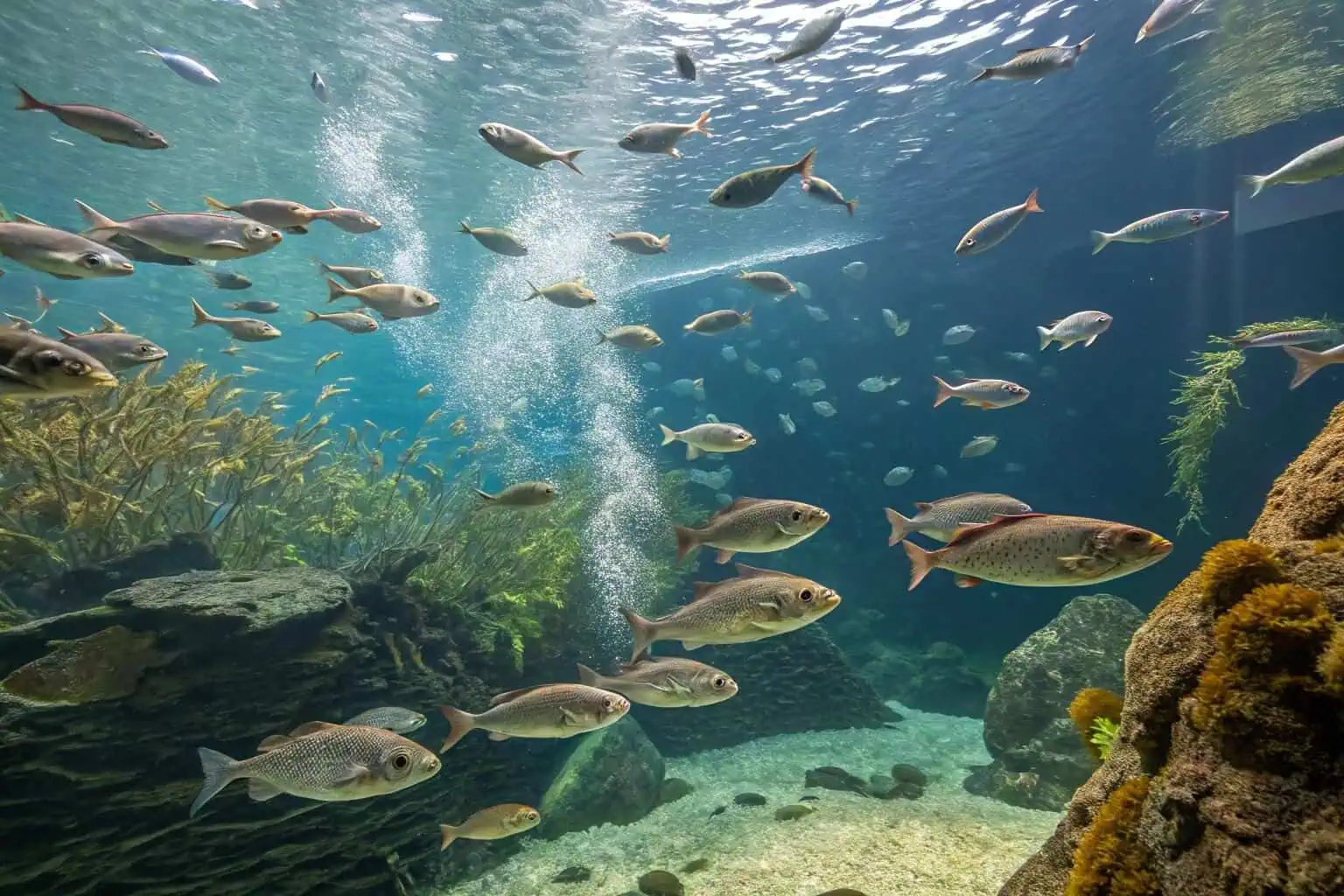
I've seen firsthand how quickly a population of guppies can expand. It's quite astonishing! One day you have a few, and a few weeks later, the tank is teeming with tiny fry. This rapid reproduction is a survival strategy for these species in the wild, ensuring enough offspring make it to adulthood. For hobbyists, it can be an exciting part of fishkeeping, watching new generations emerge. However, it also means you need to be prepared. Overcrowding can become an issue quickly if you don't have a plan for the extra fish. Some people set up separate breeding tanks12, while others might sell or give away the fry. It's a dynamic aspect of the hobby that highlights the vitality of these species. For small-scale breeders, this trait is obviously a huge advantage, allowing for quick stock turnover and selection for desired traits.
Understanding Rapid Reproduction
Fish that reproduce quickly often share certain biological characteristics. Livebearers, for instance, give birth to free-swimming fry rather than laying eggs, which gives the young a better start in life. They also tend to have short gestation periods13 and can store sperm, allowing them to produce multiple broods from a single mating. Egg-layers like Zebra Danios14 also reproduce quickly, laying hundreds of eggs at a time, though the survival rate of fry might be lower without careful intervention. The key factors are the frequency of breeding, the number of offspring per brood, and the time it takes for offspring to reach sexual maturity themselves. Environmental conditions like water temperature and food availability also play a significant role in triggering and sustaining reproductive cycles.
Examples of Fast-Reproducing Fish
| Fish Species | Reproductive Type | Frequency | Typical Brood/Clutch Size15 |
|---|---|---|---|
| Guppy (Poecilia reticulata) | Livebearer | Every 4-6 weeks | 20-50 fry |
| Molly (Poecilia sphenops) | Livebearer | Every 4-8 weeks | 20-100 fry |
| Platy (Xiphophorus maculatus) | Livebearer | Every 4-6 weeks | 20-80 fry |
| Zebra Danio (Danio rerio) | Egg-layer | Can spawn every few days with conditioning | 100-500+ eggs |
| Convict Cichlid (Amatitlania nigrofasciata) | Egg-layer (substrate spawner) | Can spawn every few weeks if conditions are right | 100-300+ eggs |
Managing a population of fast-reproducing fish requires attention. It's a rewarding challenge that can teach a lot about fish biology and tank management. For those using our Bancy fish tanks16 for breeding, the durability and ease of cleaning become even more important when dealing with frequent broods and the need for pristine water quality.
Which aquarium fish grow faster?
Looking to see your aquarium inhabitants reach their full size quickly? Some popular aquarium fish are known for their relatively speedy growth.
Goldfish, if given enough space and proper care, can grow surprisingly fast, as can some cichlids and larger livebearers like swordtails.
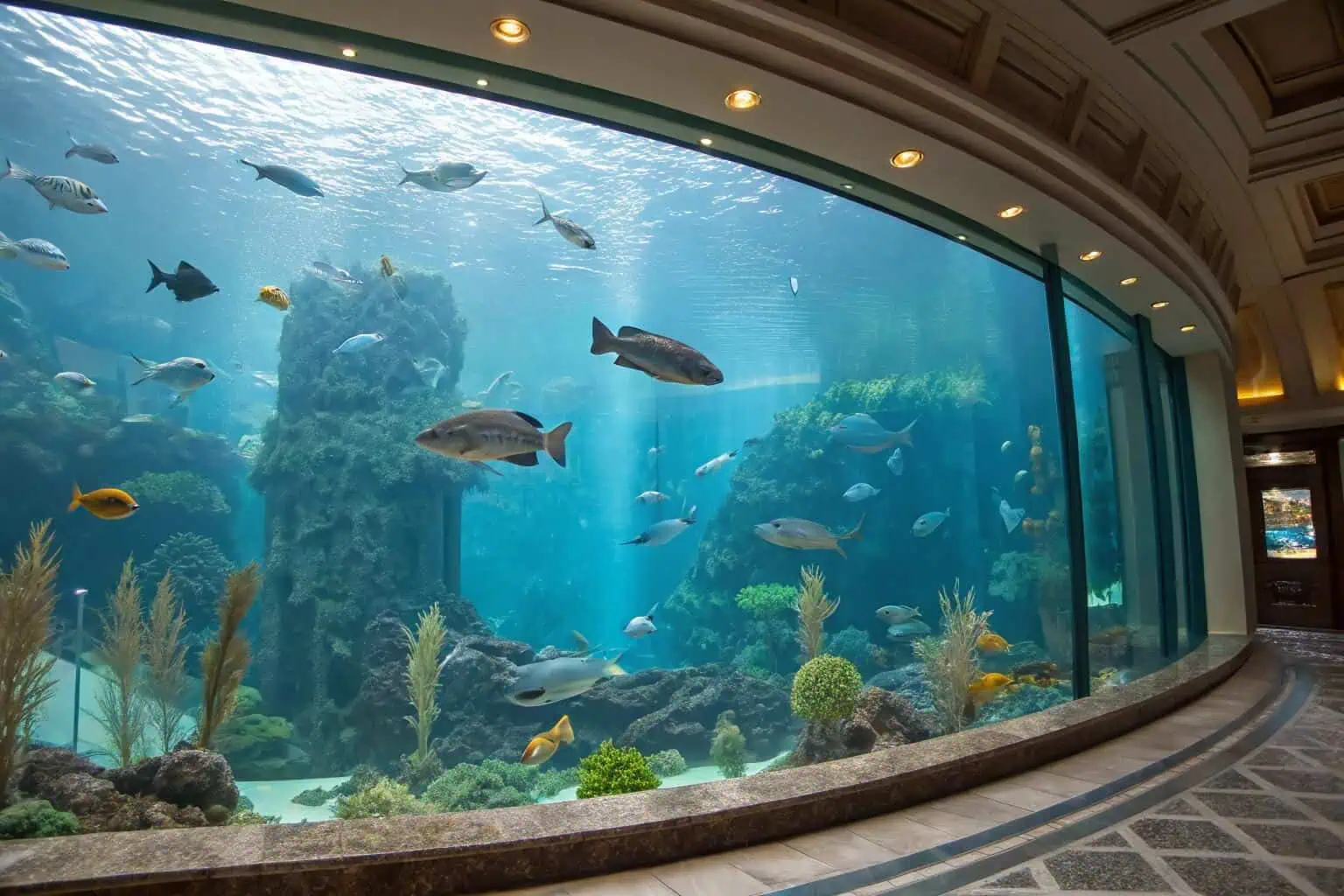
I've always been amazed by the growth potential of common goldfish. People often buy them small, thinking they'll stay that way in a small bowl, but with a large enough tank and good nutrition, they can grow quite large, quite fast. It's a common misconception that leads to many goldfish being kept in inadequate conditions17. Similarly, certain cichlids, like the Oscar, are known for their rapid growth from a small juvenile to an impressive adult. This rapid growth is exciting to watch but also means planning ahead for their adult size is crucial. You need to ensure your tank, like the robust and spacious options Bancy can provide, is suitable for their eventual dimensions. It’s a commitment, but seeing a fish thrive and reach its full potential under your care is incredibly satisfying.
Factors for Fast Growth in Aquariums
Several elements contribute to how fast an aquarium fish will grow. Tank size is paramount; a larger tank provides more swimming space and helps maintain stable water quality, both of which are conducive to growth. Diet is equally critical – a varied, high-protein diet18 appropriate for the species will fuel rapid development. Water quality, including regular water changes and proper filtration, ensures that fish aren't stressed and can allocate energy to growth. Temperature also plays a role, as optimal temperatures for a species often correlate with better metabolic rates and growth. Finally, genetics are a baseline; some species are simply predisposed to grow faster and larger than others. It's a combination of providing the right environment and understanding the fish's natural tendencies.
Aquarium Fish Known for Faster Growth
| Fish Species | Potential Adult Size | Key Growth Factors | Notes |
|---|---|---|---|
| Common Goldfish (Carassius auratus)19 | 10-12+ inches | Large tank, good filtration, varied diet | Often stunted in small tanks |
| Oscar (Astronotus ocellatus)20 | 10-14 inches | Large tank (75+ gallons), high-protein diet, warm water | Can be aggressive, needs space |
| Swordtail (Xiphophorus hellerii) | 4-6 inches (males with sword) | Good diet, clean water, space | Active swimmers, males can be territorial |
| Angelfish (Pterophyllum scalare)21 | 6 inches tall, 8-10 inches with fins | Tall tank, good diet, stable water | Can be sensitive, but grow steadily |
| Tilapia (various species, if kept in large aquariums) | Varies, can be 12+ inches | Very large tank/pond, warm water, good diet | More common in aquaculture but some keep them |
Choosing fish that grow faster can be very rewarding, as you see tangible results of your care. It’s important to research the specific needs of any fish you choose to ensure you can provide the right environment for them to flourish, perhaps in one of Bancy's customizable and durable tanks designed for various aquatic life.
Conclusion
Understanding fish growth rates, ease of care, and reproduction helps you choose the best species for your aquarium or aquaculture project, ensuring a rewarding experience.
-
Explore expert tips from seasoned aquarium hobbyists to optimize your fish growth and health. ↩
-
Discover effective strategies for small-scale breeders to enhance their breeding programs and achieve faster results. ↩
-
Exploring the impact of diet on fish growth can enhance aquaculture practices and fish health. ↩
-
Explore this link to learn about the ideal conditions and care tips for keeping Guppies healthy and thriving. ↩
-
Discover the nutritional needs of Molly fish to ensure they grow healthy and vibrant in your aquarium. ↩
-
Find out how to set up the perfect environment for Zebra Danios to thrive and exhibit their natural behaviors. ↩
-
Discover a variety of fish that are perfect for beginners, ensuring a smooth start to your fishkeeping journey. ↩
-
Exploring peaceful fish options can enhance your community tank setup, ensuring a harmonious environment for all species. ↩
-
Learning about prolific breeders can add excitement to your aquarium hobby, but also prepare you for managing their offspring effectively. ↩
-
Learn about the ideal tank conditions necessary for maintaining a healthy environment for your freshwater fish, promoting their well-being and longevity. ↩
-
Learn effective strategies for maintaining perfect water management, crucial for the health of your fish. ↩
-
Setting up breeding tanks can help manage guppy populations and ensure healthy fry development, making your fishkeeping more successful. ↩
-
Discover the benefits of short gestation periods in fish and how they contribute to rapid population growth in aquatic environments. ↩
-
Learn about Zebra Danios' breeding habits and how they manage to reproduce quickly, which is fascinating for fish enthusiasts. ↩
-
Discovering typical brood sizes can aid in selecting fish for breeding and maintaining a balanced aquarium ecosystem. ↩
-
Explore the advantages of Bancy fish tanks, including their durability and ease of cleaning, essential for successful fish breeding. ↩
-
Exploring the necessary conditions for your fish will help you create a thriving environment, enhancing their health and longevity. ↩
-
Exploring the benefits of a high-protein diet can enhance your fish's health and growth rate significantly. ↩
-
Explore this link to learn about the ideal conditions and care tips for keeping Common Goldfish healthy and thriving. ↩
-
Discover essential care tips for Oscars, including tank size, diet, and social behavior to ensure a healthy environment. ↩
-
Find out the best practices for maintaining a stable environment for Angelfish, ensuring their health and growth. ↩